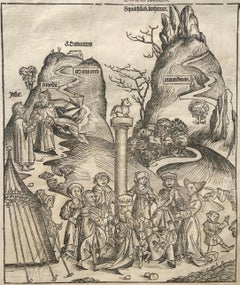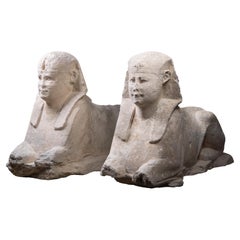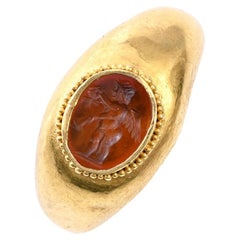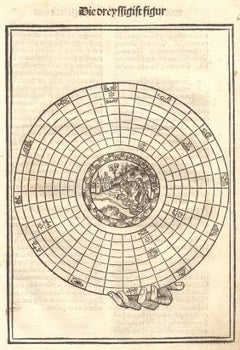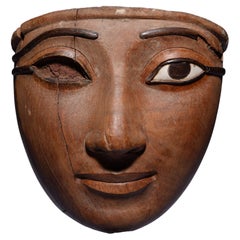Recognized Dealers
15th Century and Earlier Old Masters Figurative Prints
Woodcut
Antique 15th Century and Earlier Egyptian Egyptian Figurative Sculptures
Limestone
Antique 15th Century and Earlier Italian Classical Roman Signet Rings
Carnelian, Gold, 22k Gold
15th Century and Earlier Old Masters Figurative Prints
Woodcut
Antique 15th Century and Earlier Busts
Marble
Antique 15th Century and Earlier Egyptian Egyptian Figurative Sculptures
Fruitwood, Hardwood
Antique 15th Century and Earlier Afghan Byzantine Dome Rings
Carnelian, 18k Gold
Antique 15th Century and Earlier Italian Byzantine Signet Rings
Gold
Antique 15th Century and Earlier European Byzantine Signet Rings
Gold
Antique 15th Century and Earlier Sterling Silver
Sterling Silver
Antique 15th Century and Earlier Italian Classical Roman Signet Rings
Jasper, 18k Gold, Yellow Gold
Antique 15th Century and Earlier Italian Classical Roman Signet Rings
Carnelian, Gold, 22k Gold
Antique 15th Century and Earlier Pakistani Natural Specimens
Other
Antique 15th Century and Earlier Italian Signet Rings
Gold, 22k Gold
Antique 15th Century and Earlier Italian Classical Roman Signet Rings
Carnelian, Gold, 22k Gold
Antique 15th Century and Earlier Australian Natural Specimens
Multi-gemstone
Antique 15th Century and Earlier Tanzanian Natural Specimens
Other
Antique 15th Century and Earlier Moroccan Natural Specimens
Other
Antique 15th Century and Earlier Malagasy Natural Specimens
Other
Antique 15th Century and Earlier South American Beaded Necklaces
Gold
Antique 15th Century and Earlier Italian Modernist Pendant Necklaces
Diamond, White Diamond, Hematite, Gold, 18k Gold, Yellow Gold, Silver
Antique 15th Century and Earlier Natural Specimens
Other
Antique 15th Century and Earlier Italian Byzantine Signet Rings
Vermeil, Silver
15th Century and Earlier Medieval Drawings and Watercolor Paintings
Ink
Antique 15th Century and Earlier American Drop Earrings
Diamond, Gold, 18k Gold, Silver
Antique 15th Century and Earlier Italian Classical Roman Signet Rings
Agate, 18k Gold
Antique 15th Century and Earlier European Classical Greek Mounted Objects
Bronze
Antique 15th Century and Earlier Yemeni Abstract Sculptures
Alabaster
Antique 15th Century and Earlier Italian Byzantine Signet Rings
Gold, 22k Gold, Yellow Gold
Antique 15th Century and Earlier Scandinavian Band Rings
Gold, Yellow Gold
Antique 15th Century and Earlier Italian Classical Roman Signet Rings
Gold, 22k Gold, Yellow Gold
Antique 15th Century and Earlier Italian Byzantine Signet Rings
Gold
Antique 15th Century and Earlier Italian Classical Roman Signet Rings
18k Gold, Yellow Gold, Gold, Silver
Antique 15th Century and Earlier Natural Specimens
Other
Antique 15th Century and Earlier Natural Specimens
Other
Antique 15th Century and Earlier Italian Classical Roman Signet Rings
Agate, Gold
Antique 15th Century and Earlier Italian Classical Roman Signet Rings
Citrine, 18k Gold, Yellow Gold
Antique 15th Century and Earlier Italian Classical Roman Signet Rings
Amethyst, Gold
Antique 15th Century and Earlier Italian Classical Roman Signet Rings
Agate, 18k Gold, Yellow Gold
Antique 15th Century and Earlier Canadian Natural Specimens
Stone
Antique 15th Century and Earlier Cypriot Abstract Sculptures
Terracotta
Antique 15th Century and Earlier Italian Classical Roman Signet Rings
Lapis Lazuli
15th Century and Earlier Art Deco Nude Drawings and Watercolors
Graphite
Antique 15th Century and Earlier Fireplaces and Mantels
Marble
Antique 15th Century and Earlier Italian Classical Roman Signet Rings
Chalcedony, Gold, Yellow Gold
Antique 15th Century and Earlier Italian Classical Roman Side Tables
Marble, Iron
Antique 15th Century and Earlier Scandinavian Band Rings
Gold, Yellow Gold
Antique 15th Century and Earlier Italian Signet Rings
Gold, 18k Gold, Silver
Antique 15th Century and Earlier Greek Pendant Necklaces
14k Gold, Silver
Antique 15th Century and Earlier Signet Rings
Carnelian, Yellow Gold
Antique 15th Century and Earlier Signet Rings
Carnelian, Yellow Gold
15th Century and Earlier Old Masters Abstract Drawings and Watercolors
Ink, Vellum
Antique 15th Century and Earlier Signet Rings
Yellow Gold
Antique 15th Century and Earlier Signet Rings
Yellow Gold
Antique 15th Century and Earlier Italian Classical Roman Signet Rings
18k Gold, Yellow Gold, Silver
Antique 15th Century and Earlier Classical Roman Signet Rings
Lapis Lazuli, Gold, Silver
Antique 15th Century and Earlier Afghan Byzantine Dome Rings
Turquoise, Gold, 18k Gold
Antique 15th Century and Earlier Italian Classical Roman Signet Rings
18k Gold, Yellow Gold, Silver
Antique 15th Century and Earlier European Classical Roman Signet Rings
22k Gold, Silver
Antique 15th Century and Earlier Italian Signet Rings
Jasper, 22k Gold
